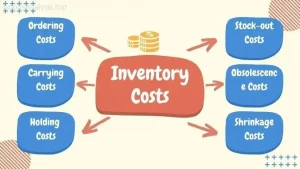Debt. Just saying the word can give anyone a headache, and it’s a topic most of us would rather avoid. However, if you’re in debt (and let’s face it, many of us are), managing it isn’t just about paying bills on time. It’s about understanding your financial landscape, knowing your options, and making smart decisions that align with your long-term goals.
I’ve been around the block, and trust me—if you follow a well-thought-out plan, you can not only get out of debt, but also build a healthier financial future. But first, let’s break this down with some solid advice, backed by research and data, sprinkled with just a little bit of humor. Because who says debt management has to be all doom and gloom?
Why We Get Into Debt
Let’s start with a simple question: How did you get here? For many, the road to debt is paved with good intentions that somehow went awry. Here are some key statistics and insights that help explain why so many people find themselves drowning in debt:
- Consumer debt in the U.S. alone tops $17 trillion (Federal Reserve, 2023). Yes, trillion. This includes everything from credit card debt to student loans to mortgages. It’s no wonder we feel like we’re all carrying a heavy burden.
- The average American household carries around $90,000 in debt (creditcards.com, 2023). But here’s the kicker: About 40% of people don’t even realize how much they owe until it becomes a crisis. That’s why financial education is so crucial—it helps you avoid falling into this trap.
The reasons for falling into debt can vary: overspending, unexpected life events (medical emergencies, job loss), poor financial planning, or simply keeping up with societal pressures. Many people live paycheck to paycheck, and when an emergency hits, they have no choice but to turn to credit.
Step 1: Acknowledge the Problem
It’s time to face the music. According to a survey by the National Endowment for Financial Education (NEFE), almost 40% of people don’t track their spending, which is one of the leading causes of debt. Simply acknowledging that you have a problem can be the first step toward resolving it.
So, what’s the first thing to do?
- List all your debts. Yes, this means sitting down and writing out how much you owe, to whom, and at what interest rate. Don’t be shy about this. You can’t fix a problem if you don’t fully understand it.
- Assess your income and expenses. This is where the magic happens. Create a realistic budget. The 50/30/20 rule is an excellent place to start: 50% for necessities (housing, groceries), 30% for lifestyle (entertainment, dining out), and 20% for savings and debt repayment.
Step 2: Prioritize Your Debt
Not all debts are created equal. Some debts have higher interest rates than others, and those should be tackled first. Research consistently shows that high-interest credit card debt is the most financially draining (National Foundation for Credit Counseling, 2023). If you have a mix of high and low-interest debts, focus on paying off the high-interest ones first—this method is known as the Debt Avalanche method.

If you’re more motivated by seeing progress quickly, then the Debt Snowball method might work better for you. This involves paying off your smallest debt first, then moving on to the next one, and so on. The idea is to get small wins early on, which keeps you motivated.
But, here’s a word of caution: It’s easy to get emotionally attached to debts that feel “easier” to pay off, but sometimes those interest rates can be deceptively costly. Don’t just focus on the emotional wins—be strategic.
Step 3: Explore Debt Solutions
Depending on your situation, you might find that you need help. There are a variety of options out there, so here are a few to consider:
- Debt consolidation: This can be a good option if you have multiple high-interest debts and want to simplify things with a single monthly payment. It can also help lower your interest rate if you’re able to qualify for a lower-rate loan.
- Debt management plan (DMP): Nonprofit credit counseling agencies can help you create a DMP, where they negotiate with your creditors to lower your interest rates and work out a more manageable payment plan.
- Debt settlement: If you’re seriously behind on payments, debt settlement might sound tempting. However, be careful. While it can lower the amount you owe, it often results in severe credit damage and long-term consequences. Always speak to a professional before going this route.
- Bankruptcy: The last resort. Bankruptcy is not as easy to navigate as some might think, and it comes with long-term consequences. It can help in cases of severe financial hardship, but it’s essential to get expert advice.
Step 4: Build Better Habits
Debt management isn’t just about getting rid of what you owe—it’s also about preventing future debt from creeping in. So how do you set yourself up for long-term success?
- Emergency savings: Life happens. Whether it’s a car breakdown, a health issue, or job loss, having an emergency fund is essential. Ideally, you should have enough saved to cover three to six months of living expenses.
- Avoid lifestyle inflation: As your income grows, it’s tempting to increase your spending. Resist the urge to “keep up with the Joneses.” Instead, put any extra money toward savings or paying off debt.
- Financial literacy: Knowledge is power. The more you understand about personal finance, the better equipped you’ll be to handle debt and avoid it in the future. Consider taking courses, reading books, or seeking professional advice.

The Human Side of Debt
Debt isn’t just a financial issue; it’s emotional. It can cause anxiety, stress, and even depression. And while it’s easy to feel isolated in your struggles, you’re definitely not alone. The good news is that many people have been in your shoes and made it out the other side. Here’s what a few of them have to say:
- Maria (33, Spain): “I got into debt after my divorce. The emotional toll of the breakup, combined with the expenses of a new life, was overwhelming. But once I realized the importance of budgeting and started paying off my smallest debt first, I felt a huge weight lift. I’m still not debt-free, but I’m on the right path.”
- James (45, USA): “I used to live paycheck to paycheck, always hoping my credit cards would give me a little breathing room. But once I started tracking my spending and tackling my debt, things got easier. My credit score isn’t perfect, but it’s definitely improving. It’s all about taking it one day at a time.”
- Linh (26, Vietnam): “When I left school with student loans and a car loan, I was overwhelmed. But learning about different debt management strategies really helped. I’m using the debt avalanche method and paying down my highest-interest debts first. It’s hard, but I can already see the light at the end of the tunnel.”
Final Thoughts: Take Control
Debt can be overwhelming, but it’s not a life sentence. You don’t need to be rich to manage debt—you need to be disciplined, informed, and willing to take action. With the right plan, tools, and support, you can overcome your debt and move toward financial freedom.
So, whether you’ve just started noticing the effects of debt or you’re deep in the trenches, don’t panic. Take it one step at a time. And remember: no one ever became debt-free overnight, but with persistence, strategy, and maybe a little help from professionals, it is entirely possible.
Quick Tips for Staying on Track:
- Track your spending every month.
- Set a clear budget and stick to it.
- Avoid unnecessary purchases.
- Reach out for professional help if you’re feeling overwhelmed.
Don’t wait for a crisis to take control of your finances. Act now, and take the first step toward a debt-free life.









